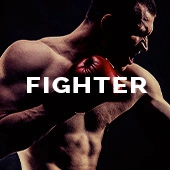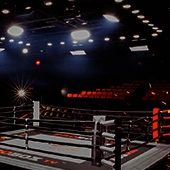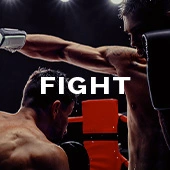by David P. Greisman
Roy Jones’ career officially ended on Saturday, Dec. 12, 2015, at 11:37 p.m. in Moscow, one minute and 57 seconds into the fourth round of his fight with Enzo Maccarinelli.
That’s if Jones finally makes the right decision.
He needs to make that decision.
Then again, he wouldn’t have needed to make it now if he’d made it before.
After all, Jones’ career truly ended a long time ago.
It wasn’t over yet in May 2004, when Antonio Tarver landed the single left hand that dropped Jones and dethroned the longtime light heavyweight king.
It wasn’t over when Glen Johnson punished Jones for much of nine rounds that September before landing the right that finished their fight. If Jones wasn’t already out from that shot, then there was the force with which his head hit the canvas, ensuring he wouldn’t be able to get up.
It wasn’t even over when Jones returned a year later, in October 2005, dropping a clear decision to Tarver in their third and final match.
He had lost three in a row. This only meant that he could no longer compete with the best at 175 pounds, and perhaps the best in the sport in general.
That’s why he spent his next three fights over much of the next three years taking on lesser opposition, an attempt to rebuild himself, trying to regain his confidence, taking wins over Prince Badi Ajamu, Anthony Hanshaw and then in a pay-per-view with Felix Trinidad that essentially amounted to an expensive exhibition, as Trinidad was no longer active and nowhere near his best fighting weight.
And that’s also why Jones lost in his final crack at returning to the top of the division he once ruled, knocking Joe Calzaghe down in the first round in November 2008 and then losing the next 11 rounds and a wide decision on the scorecards.
He was 39, nearly 40. But he wasn’t done yet. Jones could still toy with foes who lacked the speed and skill to compete with him, even in his diminished state. Omar Sheika didn’t last five. Jeff Lacy was done after 10.
Jones became overconfident. And that’s when his career was finally over.
He traveled to Australia in 2009 to face Danny Green, a cruiserweight who was fighting at the time at about 180 pounds, not too far above the light heavyweight limit. Green stopped Jones in two minutes.
The long-anticipated rematch with Bernard Hopkins came next, four months later in April 2010, way too many years beyond the fight’s expiration date. Hopkins won an ugly and uncompetitive decision.
Jones took another 13 months off, moved back up to cruiserweight and flew to Moscow in May 2011 to face Denis Lebedev, who was much bigger at about 200 pounds and who knocked Jones out in the 10th round.
Once again, he’d lost three in a row. This time, well, it should’ve been time.
He couldn’t take a hard shot anymore. Tarver’s left hand had been perfectly timed and placed. Johnson had landed to the left side of Jones’ head, around his ear. That’s where Green landed as well, leaving Jones’ legs splaying and leaving him unable to fend off Green’s finishing flurries.
He wouldn’t make 175 anymore, and that put him in with heavier opponents with heavier hands. Jones had once needed special training to bulk up for his fight with heavyweight titleholder John Ruiz. On the night of the fight, HBO put Jones on its unofficial scale. He was 199 with clothes on. He wasn’t a true heavyweight then, never mind a true cruiserweight, nor was he one now, as his sagging, aging body demonstrated over the past few years. The best of the 200-pound division, meanwhile, often needed to lose weight to get there.
And he didn’t fight for three-minute rounds anymore. That was clear enough in his first fight with Tarver back in 2003, the first fight after the Ruiz bout. Jones won and blamed his performance on all of the muscle he’d had to take off in the eight months since beating Ruiz.
The activity just wasn’t there, and it remained that way over the years. His legs had slowed as well. He was in his 40s. The reflexes and athleticism that had led him to world titles at middleweight, super middleweight, light heavyweight and heavyweight had since faded. He was more able to be hit and more likely to be hurt.
He should’ve retired in 2011. He could’ve retired even sooner than that. Instead, he fooled himself into continuing on — a masochistic masquerade that he thought would bring him back to glory but only prolonged the inevitable.
He’d get knocked out again. He’d take more punches than necessary. He’d suffer another frightening ending.
This wouldn’t be the equivalent of Willie Mays stumbling once in the outfield or Johnny Unitas struggling from under center. This was closer to Muhammad Ali getting in with Larry Holmes when he shouldn’t have been fighting anymore, getting clobbered, and then coming back a year later to lose to Trevor Berbick.
The past several years were sad in some ways but could’ve been much worse. Jones no longer headlined on American television; he fought on small shows when he did appear in the United States. He also spent plenty of time overseas, where nostalgia meant fans came to arenas in Latvia, Poland and Russia for the rare chance to see one of the most famous boxers of his generation play some of his old hits on an international stage.
Like aging bands, he couldn’t perform tunes with the same energy he had when he was younger. But he didn’t need to. He still could hit enough of the notes to be recognizable. He could look more like the old Roy Jones instead of an old Roy Jones, — thanks to the people he was facing.
There was Max Alexander, 14-5-2 in Georgia in late 2011. Jones won a unanimous decision. There was Pawel Glazewski, 17-0 in Poland in June 2012. Jones took a split decision. There was Zine Benmakhlouf, 17-3-1 in Russia in December 2013. Jones won a wide one.
Then there were Courtney Fry, 18-5 in Latvia in July 2014; Hany Atiyo, 14-2 in Russia in September 2014; Willie Williams, 14-8-2 in North Carolina this past March; Paul Vasquez, 10-6-1 in Florida just 22 days later; and Eric Watkins, 12-9-2 in Connecticut in August. Fry went down in five, Atiyo in one, Williams in two, Vasquez in one and Watkins in six.
Throughout it all, Jones had spoken of facing Marco Huck, the longtime cruiserweight titleholder. It was a foolish idea. Jones hadn’t lost in years, but he hadn’t faced anyone near the best of the division. He also was getting even older. He was 46, approaching 47.
Bernard Hopkins had been able to fight at a high level until he was 49, but he hadn’t taken the kind of damage Jones had. George Foreman regained the heavyweight championship at nearly 46. But the years he’d spent outside of the sport had actually preserved him.
Jones’ three losses to Tarver and Johnson were more than a decade ago. Hopkins’ style had been based on not taking punches. Foreman’s chin allowed him to absorb shots. This version of Jones had neither of those luxuries.
He was fortunate that Huck lost to Krzysztof Glowacki in August. Even that version of Huck would’ve been dangerous. Instead, Jones signed to fight Enzo Maccarinelli.
An early press release for the fight announced it as being for a world title. That made no sense. Even the sanctioning body mentioned, the World Boxing Association, wouldn’t stoop that low. Although it infamously hands out multiple world titles for each weight class, it didn’t have Maccarinelli or Jones ranked in its top 15. The press release wasn’t true.
Jones had dreamed of — or rather deluded himself into pursuing — winning a title at cruiserweight, giving him belts in five divisions. That wouldn’t happen against Maccarinelli. He’d have to win to get another chance.
He wouldn’t even do that.
Maccarinelli wasn’t much. He had seven losses on his record, all by knockout or technical knockout. There was a knockout loss very early in his career, in 2000 in what was just his fourth pro fight. Since then he’d been stopped in two rounds by David Haye in 2008, put away in nine rounds by Ola Afolabi in 2009, sent home in three rounds by Lebedev later that year, and finished in seven by Alexander Frenkel in 2010.
He soon dropped down to light heavyweight. Ovill McKenzie scored a second-round technical knockout in 2012. Maccarinelli won their rematch, but then took too much punishment over the course of five rounds with Juergen Braehmer in 2014.
What Maccarinelli was, however, was still much better than anyone Jones had beaten in recent years. Maccarinelli also was much better than Jones.
Maccarinelli allowed his body to benefit from coming back up to cruiserweight. Though he would come in lighter than Jones, he would still be naturally bigger and stronger. He also was fresher at 35. Though he, too, had accumulated punishment over the years, Maccarinelli soon showed that he had more than enough left to be too much for Jones.
Jones could still throw with speed and timing. It didn’t compare to what he once had, and it didn’t come out often enough. Jones could still make opponents miss. That didn’t happen anywhere near often enough either.
What Jones had was muscle memory. What he lacked was the chin to handle a good shot, the power to get Maccarinelli’s respect, the legs to move around the ring, and the stamina to do more than punch on rare occasions. The rest of the time he rested on ropes that were nice and loose in his newly adopted second home of Russia, and he used those ropes to lean back and away from a few of Maccarinelli’s shots.
The fight looked like a sparring session. Maccarinelli was nothing special. He didn’t need to be.
About halfway into the fourth, Jones ducked his head forward and tried to clinch with Maccarinelli. Maccarinelli bulled Jones a couple of steps back to the ropes and then threw a right uppercut. Jones crumped to the canvas. He got up by the count of three but had even less left than what little he already had.
Jones returned to the center of the ring, threw a weak left hook and attempted to tie up. Maccarinelli tried another right uppercut. Jones backed away and returned to the ropes. Maccarinelli looped a right hand around Jones’ left glove, then shoe-shined Jones’ high guard, a distraction meant to keep Jones guessing for when and where the heavier follow-up would come.
It came as a right uppercut that split the guard. Jones tried to evade the next few punches, but then Maccarinelli landed a hard right hand to the left side of Jones’ head, in a similar spot as where Johnson and Green had landed. Jones was out on his feet. His head leaned forward for a moment, a tree that was waiting to topple, and finally he fell face-first to his left.
The fight was over. So, too, should be his career.
This wasn’t even Ali losing to Holmes and Berbick. This was more akin to Mike Tyson losing to Danny Williams and Kevin McBride. It wasn’t a sad ending coming against fighters who are good or great. Jones lost — badly — to an opponent who never could compete at a high level.
After the loss to Johnson back in 2004, Jones’ camp said that he’d lacked motivation. More than a decade later, it’s no longer about not being able to get up for his opponents. Now it’s about not being able to get up from the canvas.
Roy Jones’ career is over. His team members and loved ones hadn’t convinced him, if they even tried. They, the athletic commissions and promoters continued to enable him.
It took a long trip to Moscow, a short night and a long flight home for Jones to be shown what we’ve long known.
The 10 Count is on hiatus.
“Fighting Words” appears every Monday on BoxingScene.com. Pick up a copy of David’s book, “Fighting Words: The Heart and Heartbreak of Boxing,” at http://bit.ly/fightingwordsamazon or internationally at http://bit.ly/fightingwordsworldwide . Send questions/comments via email at fightingwords1@gmail.com


